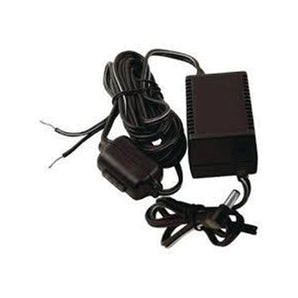In the quest for ubiquitous internet access, Starlink has emerged as a beacon of hope, especially for those in remote or underserved regions. Launched by SpaceX, its constellation of low Earth orbit (LEO) satellites promises high-speed broadband across the globe. For South Africa, where many rural areas still lack reliable internet access, Starlink presents an exciting opportunity. However, like any technology, it's not a one-size-fits-all solution, particularly for individuals seeking mobile connectivity. Let's explore the benefits and limitations of Starlink, and consider some alternatives, including a solution that combines LTE connectivity with a signal booster.
The Bright Side of Starlink
Starlink has made significant strides in revolutionizing global internet access. Here are its most appealing features:
Global Coverage: Starlink’s ability to provide connectivity even in the most remote corners of the world is its defining feature. For rural South Africa, this could bridge the digital divide, enabling communities to access online education, healthcare, and business opportunities.
High-Speed Internet: With speeds rivaling traditional broadband providers, Starlink offers a transformative experience for regions that previously relied on slow or unreliable connections. South African users have reported speeds ranging from 50 Mbps to over 200 Mbps, depending on their location and satellite coverage.
User-Friendly Setup: Starlink’s plug-and-play system allows users to connect with minimal hassle. The kit includes a satellite dish, Wi-Fi router, and an app to guide installation and monitor performance.
What’s New in Starlink?
Mobility Solutions: While Starlink was initially designed for stationary use, recent advancements have enabled mobile applications. The Starlink Roam service (formerly "Starlink for RVs") and solutions for maritime and aviation users mean connectivity on the go is now possible. However, these services require clear skies and aren’t immune to obstructions like trees or buildings.
Enhanced Satellites: Starlink has begun deploying next-generation satellites with inter-satellite laser links. These upgrades improve bandwidth, reduce latency, and make the service more reliable, even in areas with dense coverage.
Expanding Access in South Africa: Starlink’s entry into South Africa is underway, pending final regulatory approvals. Once available, it’s expected to be a game-changer for rural connectivity. However, potential users should stay informed about licensing updates and availability.

Navigating the Challenges
Despite its advantages, Starlink is not without its challenges, especially for those looking for mobile connectivity solutions.
Intermittent Service: Due to its reliance on satellites, Starlink's service can be inconsistent, with connectivity affected by weather, physical obstructions, and the current number of satellites in orbit.
High Initial Cost: The upfront cost for the Starlink kit, alongside the monthly subscription, can be prohibitive for some users, making it less accessible than other options.
Mobility Issues: Starlink currently provides a "fixed" service, primarily designed for stationary use. While there's progress towards mobile solutions, it's not yet the ideal choice for on-the-go connectivity.
Legal Complexities: Starlink’s full deployment in South Africa has been delayed by regulatory approvals. Users must also navigate potential restrictions on mobile use, particularly for off-grid setups. The legal landscape surrounding Starlink's operation adds another layer of complexity. We've covered these issues in detail previously and will not delve into them here.
Alternatives for Mobile Connectivity
For those seeking mobile internet solutions, there are viable alternatives to Starlink.
LTE Connectivity with a Signal Booster: A combination of LTE service and a signal booster can offer a robust mobile connectivity solution. LTE, widely available and relatively stable, can be enhanced in areas with weak signals through a signal booster, significantly improving internet speed and reliability.
Traditional ISPs with Mobile Solutions: Many traditional Internet Service Providers (ISPs) offer mobile hotspots and dongles that provide internet on the go. While coverage and speeds can vary, they are a tried and tested solution for mobile internet access.
Emerging Technologies: Keep an eye on emerging technologies and service providers. The connectivity landscape is constantly evolving, with new solutions and improvements to existing technologies appearing regularly.
Making the Right Choice
Starlink’s vision of global internet access is transformative, offering hope to millions in South Africa’s underserved areas. However, its high costs, intermittent service, and ongoing regulatory challenges mean it’s not yet the perfect solution for everyone.
If you’re exploring mobile connectivity or affordable alternatives, Bolton Technical offers expert advice and cutting-edge solutions like LTE signal boosters. Whether you’re in a bakkie heading off-road or working from a remote office, our team can help you find the best internet solution to meet your needs.
For more advice on mobile connectivity solutions, Contact Our Experts for advice.







